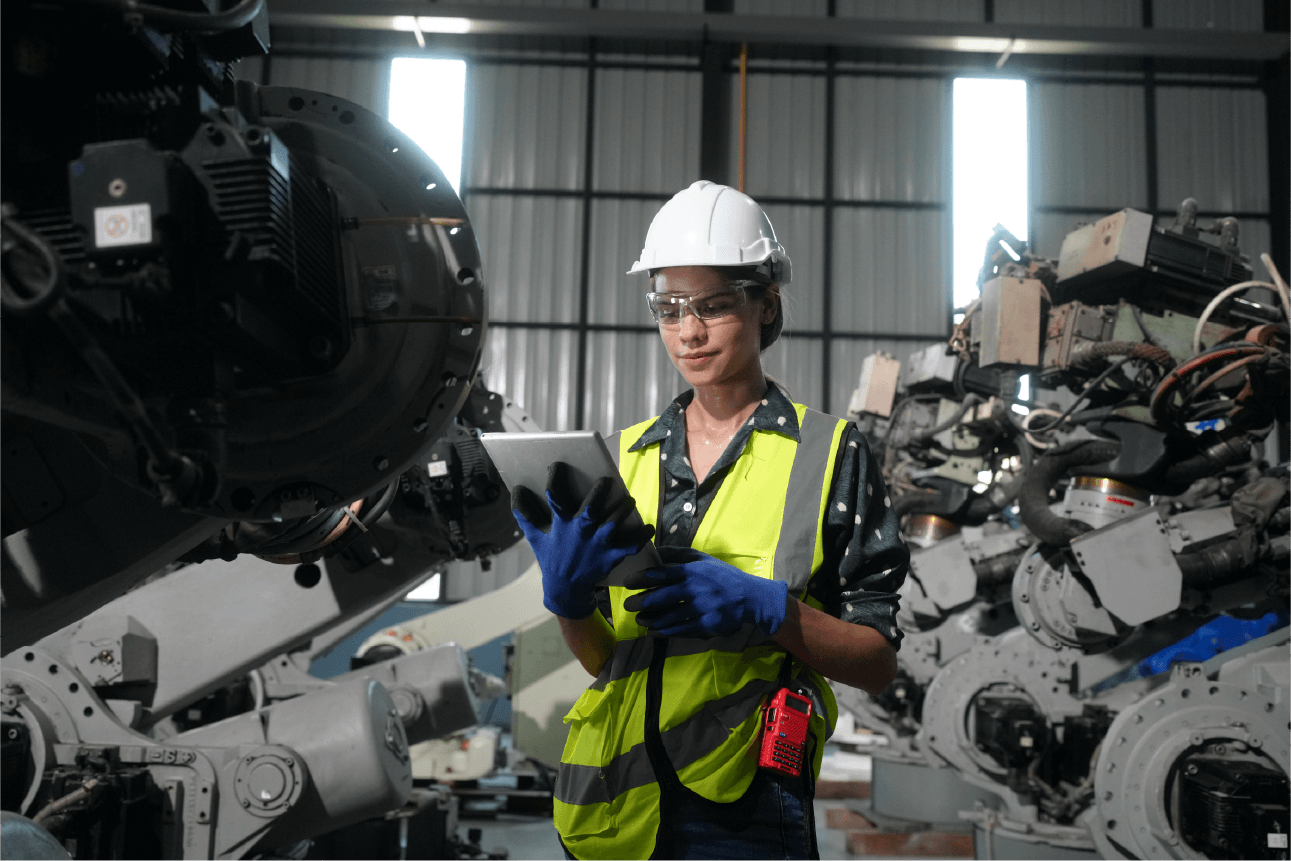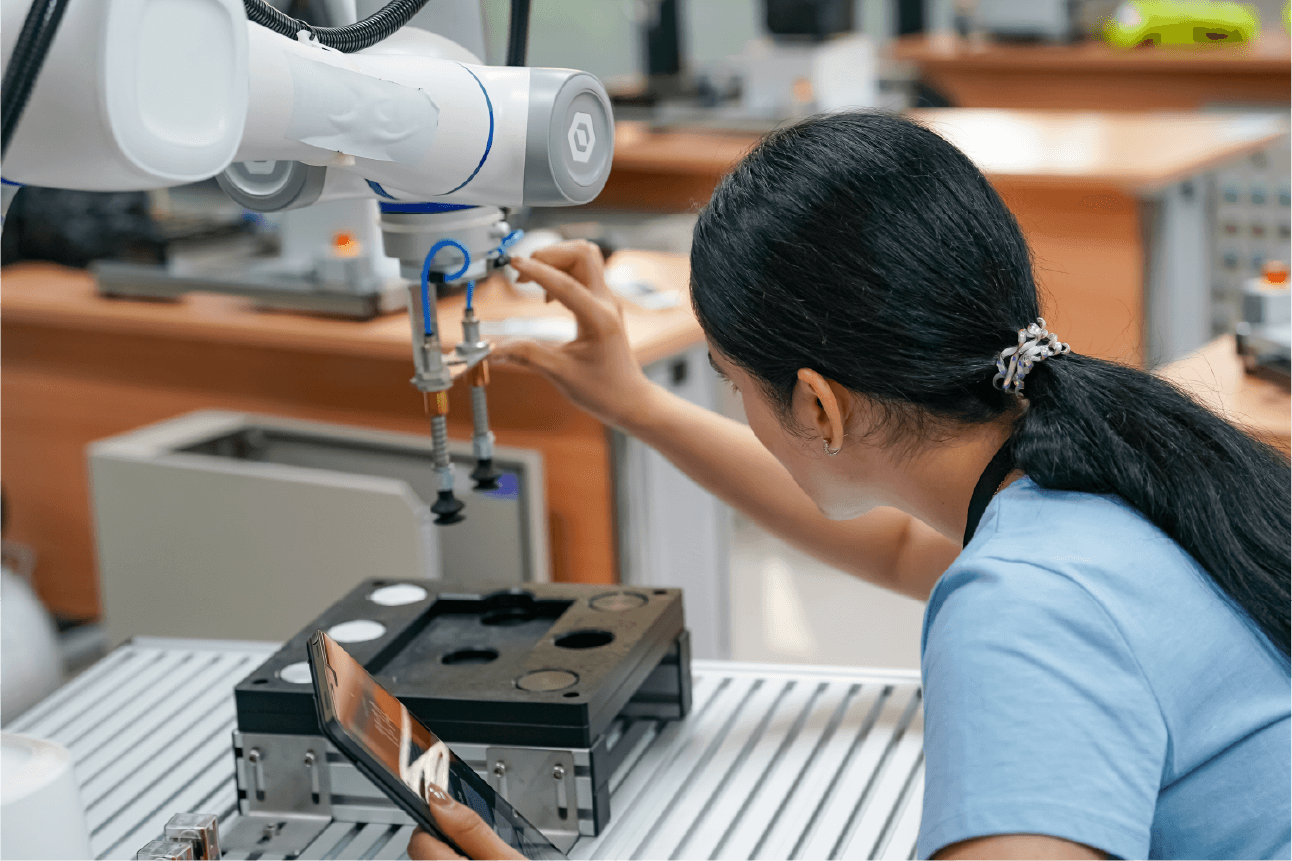Quality in manufacturing is more than a benchmark—it's fundamental to customer trust and business success. As production becomes more complex, traditional quality control methods often miss subtle defects, leading to higher costs and inefficiencies.
Integrating AI doesn't just enhance quality control; it redefines manufacturing standards. AI-driven solutions introduce greater efficiency, consistency, and resilience, detecting nuances that human inspectors might miss and adapting to complex production environments.
This shift towards AI-powered quality management is reshaping how industries approach quality, promising improved accuracy, reduced costs, and stronger customer trust.
What Are Quality Control Methods and Why Are They Essential in Manufacturing?
Quality control in manufacturing relies on a range of techniques designed to identify and eliminate defects throughout the production process. Traditional methods include inspection, which involves checking products at various stages to detect flaws early. While effective, manual inspection can be time-consuming and prone to human error.
Statistical Quality Control (SQC) uses data analysis to monitor production trends and variations, helping manufacturers address potential issues before they escalate.
Another widely adopted method is Six Sigma, a data-driven approach that focuses on minimizing defects to an impressive 3.4 per million opportunities by enhancing processes through detailed analysis.
Equally significant is Total Quality Management (TQM), which fosters a culture of continuous improvement by involving all employees in quality enhancement initiatives. Together, these methods play a vital role in maintaining accuracy and efficiency.
How Quality Control Impacts Manufacturing Efficiency and Accuracy?
Quality manufacturing doesn’t have to mean higher costs—in fact, it often means lower recall and warranty costs as research indicate that implementing strong quality control in manufacturing measures can cut defect-related costs by as much as 30%, underscoring its significant impact on a company’s profitability and long-term growth.
Quality control plays a pivotal role in optimizing production processes, ensuring smoother operations and higher standards of precision. Effective quality control reduces defects, improves customer satisfaction, and maintains brand trust—key factors that contribute to a company’s bottom line.
Traditional Quality Control vs. Modern Real-Time Visual Methods
Over the years, the methods used for quality control in manufacturing have evolved significantly, transitioning from traditional manual techniques to modern automated solutions.
The differences between traditional manual inspection techniques and modern automated quality control methods are stark. Manual quality control techniques primarily rely on human operators to visually inspect products against predefined standards. This traditional approach can be labor-intensive and time-consuming, often requiring significant manpower to ensure that quality benchmarks are met.
Furthermore, manual quality inspection methods are inherently prone to errors such as misplacement or misinterpretation of data. Additionally, the response time for identifying defects can be extended due to the necessary human assessment and subsequent reporting, which can delay corrective actions and hinder production efficiency.
In contrast, automated quality control techniques represent a significant advancement in manufacturing practices. Modern quality control utilizes machine vision and artificial intelligence (AI) to continuously monitor production lines in real-time. This capability allows for immediate detection of defects as they occur, significantly enhancing the speed and accuracy of quality assessments.
Instead of simply capturing data digitally, automated systems employ advanced analysis techniques on images and videos. This correct analysis minimizes the risk of human error and enables a more precise assessment of quality metrics. The efficiency of automated inspections is another key advantage; these systems can process large volumes of products rapidly, facilitating quicker decision-making and reducing downtime in production.
Why Does Manufacturing Need a Transformation in Quality Control Methods?
While traditional methods have served their purpose over the years, the benefits of automation—such as enhanced accuracy, faster response times, and increased efficiency—underscore the need for manufacturers to embrace these innovations to remain competitive in an evolving market landscape.
Current limitations of quality control methods in manufacturing become evident in complex production environments where precision is paramount. Industries such as aerospace and automotive face increasing demands for adaptability and accuracy due to regulatory requirements and consumer expectations.
How Do Real-Time Visual Inspection Solutions Enable Accurate Defect Detection?
Real-time visual solutions leverage advanced machine vision technology combined with AI algorithms to detect defects with unparalleled precision and speed. These systems analyze images captured during the production process, identifying anomalies that may go unnoticed by human inspectors.
For instance, Loopr’s technology can automate defect detection during the composite layup process in aerospace manufacturing or streamline inspections of turbines in maintenance, repair, and overhaul (MRO) facilities—ensuring safety and compliance with rigorous industry standards.
Quality Control in Aerospace and Automotive: Key Sector Applications
In aerospace manufacturing, defect detection is crucial for ensuring safety and compliance with stringent regulations. Real-time visual solutions enable manufacturers to maintain high-quality standards while optimizing operational efficiency.
Similarly, in the automotive sector, these technologies are instrumental in verifying that manual assembly processes adhere to specifications. By automating inspection tasks with traceable proof of record, manufacturers can enhance safety, performance, and aesthetics—key attributes that influence consumer trust.
Addressing Workforce Challenges: How Does Technology Empowers Workers?
Concerns about automation displacing workers are common; however, real-time visual solutions empower employees by enhancing productivity and reducing manual strain. By automating repetitive inspection tasks, workers can focus on more complex problem-solving activities that require human insight.
Aging Workforce in Manufacturing: How Real-Time Visual Solutions Fill the Gap?
As skilled labourers retire from the manufacturing industry, maintaining expertise levels among the workforce is the new challenge for the industry. Automation through real-time visual solutions helps bridge this gap by providing consistent quality control capabilities without relying solely on human expertise.
While not all occupations can be completely automated, nearly 60 percent of all occupations have at least 30 % of constituent activities that could be automated. Going by Mckinsey study, automation could raise productivity growth globally by 0.8 to 1.4% annually.
Newer technologies also attract younger talent who are eager to work with innovative tools that enhance their productivity while contributing to sustainable manufacturing practices.
Overcoming Challenges to Implement Real-Time Visual Quality Control
Integrating real-time visual solutions into existing manufacturing processes requires careful planning and execution. It is essential to focus on reskilling and upskilling existing workforce to ensure successful adoption of these advanced technologies.
Key strategies include providing comprehensive training programs that emphasize the benefits of AI-powered inspection systems while fostering a culture of continuous improvement within organizations.
Conclusion
The adoption of advanced quality control methods is crucial for manufacturers. As industries face increasing demands for precision and efficiency, transitioning to modern real-time visual solutions for quality control becomes essential.
Embracing real-time visual solutions empowers organizations to maintain high-quality standards while adapting to the complexities of modern manufacturing environments.
Ultimately, investing in advanced quality control methods is not just about improving current practices; it is a commitment to sustainable growth and long-term success.
As Loopr AI continues to lead the charge in transforming quality control practices through innovative technology, we invite manufacturers to join us on this journey toward a future defined by precision, efficiency, and excellence in quality assurance. By leveraging solutions such as LooprIQ Inspect and LooprIQ Verify, organizations can substantially enhance their quality control processes.
To learn how our offerings can address your unique challenges, we invite you to contact our team for a detailed consultation.


%201.svg)

.svg)




.jpeg)

